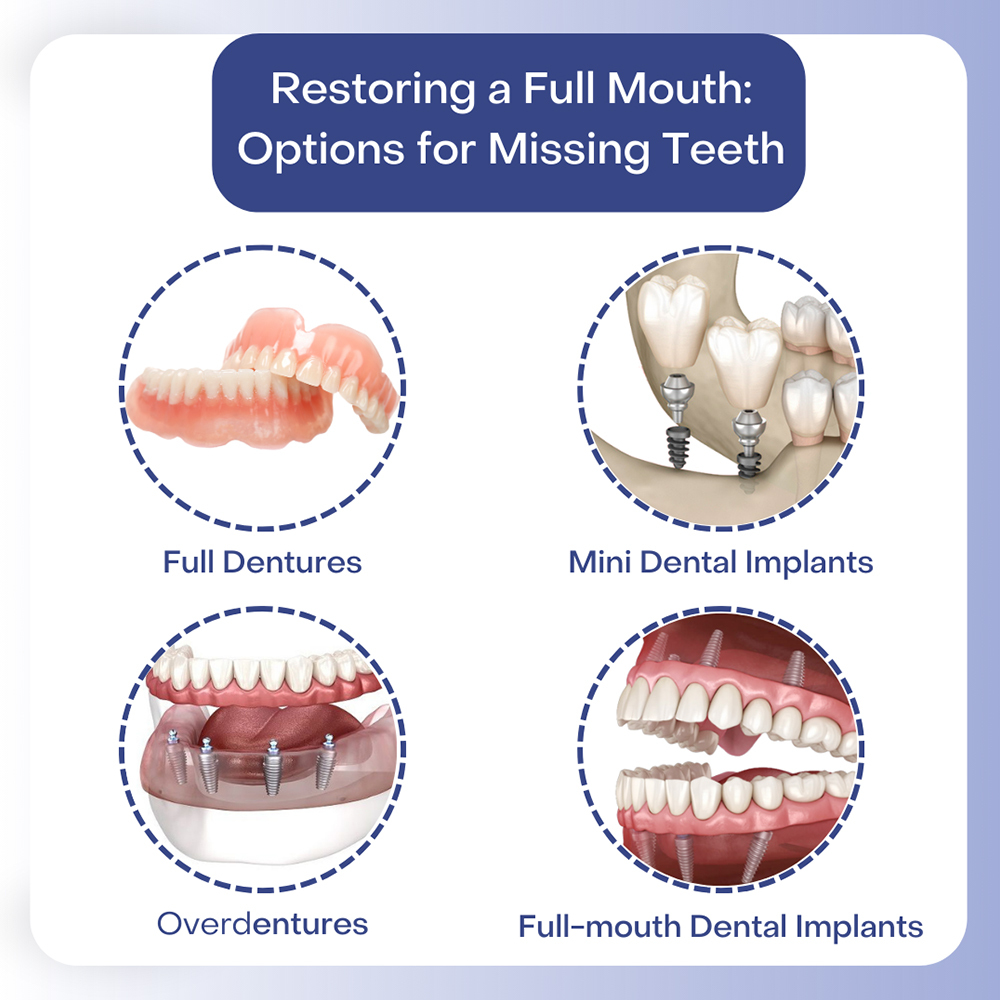7 Simple Techniques For Dental Sense
7 Simple Techniques For Dental Sense
Blog Article
Getting My Dental Sense To Work
Table of ContentsDental Sense Fundamentals ExplainedTop Guidelines Of Dental SenseDental Sense - An OverviewThings about Dental Sense
are medical devices surgically dental implanted right into the jaw to bring back an individual's capability to chew or their appearance. They offer assistance for fabricated (fake) teeth, such as crowns, bridges, or dentures. When a tooth is lost as a result of injury or disease, a person can experience problems such as rapid bone loss, faulty speech, or modifications to eating patterns that lead to discomfort.Oral implant systems include a dental implant body and dental implant joint and might also consist of an abutment fixation screw. Professional teeth whitening. The oral implant body is surgically inserted in the jawbone in place of the tooth's root. The oral implant abutment is typically attached to the dental implant body by the abutment fixation screw and prolongs through gums right into the mouth to sustain the attached man-made teeth
(https://www.goodreads.com/user/show/186244556-matthew-music)Structure of The Dental Implant System picking dental implants, speak with your dental supplier about the potential advantages and dangers, and whether you are a candidate for the procedure. Points to take into consideration: Your general wellness is a vital element in figuring out whether you are an excellent prospect for dental implants, exactly how long it will take to recover, and just how long the dental implant might remain in place.
Smoking might impact the recovery process and lower the long-term success of the dental implant. The healing procedure for the dental implant body might take several months or longer, throughout which time you generally have a short-lived abutment instead of the tooth. the dental implant treatment: Carefully adhere to the oral health directions provided to you by your oral company.
Getting The Dental Sense To Work
Implant failure can result in the demand for one more surgery to deal with or change the dental implant system. Brings back the ability to eat Recovers cosmetic look Helps maintain the jawbone from shrinking as a result of bone loss Protects the health of the surrounding bone and gum tissues Assists maintain nearby (close-by) teeth secure Enhances lifestyle Damages to bordering natural teeth throughout dental implant placement Injury to the surrounding cells during surgical treatment, such as sinus perforation Injury during surgery (for example, crack of bordering jawbone) Poor function, such as seeming like the teeth do not attack together typically An experience that the tooth is loose or twisting in position resulting from a joint screw loosening up Implant body failure (looseness of the implant body) as a result of systemic infection, which may be more probable in individuals with unchecked diabetics issues because of neighborhood infection in bone and periodontals sustaining the dental implant body due to postponed healing, which might be most likely in patients who smoke Problem cleaning the periodontals around the dental implant, causing bad oral health Without treatment periodontal illness Post-surgical pins and needles due to nerve impingement or damages Constantly inform wellness treatment suppliers and imaging professionals that you have oral implants before any type of magnetic vibration imaging (MRI) or x-ray procedures.
FDA is not familiar with any unfavorable events reported for MRI or x-ray procedures with oral implants. Oral implants systems are normally made of materials that adhere to international agreement standards of the International Organization for Standardization here are the findings (ISO) or ASTM International. These standards have details of what makes a safe material.

A dental implant is a framework that changes a missing tooth. With screw-like tools, the cosmetic surgeon inserts a dental implant right into the jawbone, and it acts as a support for a fabricated tooth, called a crown.
Rumored Buzz on Dental Sense
Some people are not qualified for dental implant surgery. It is for dental specialists to operate people with: acute illnessuncontrollable metabolic diseasebone or soft tissue disease or infectionIf these issues are settled, a person can have the surgical procedure. In, oral surgeons avoid operating people with: If individuals with any one of the above undertake dental implant surgical treatment, there is a higher danger of the implant failing.

Oral dental implant surgery is a personalized process. It's not the exact same for everybody. However the adhering to gives a basic introduction of what you can anticipate your dental professional, oral specialist, periodontist or prosthodontist to do: Put the dental implant surgically. Provide you time to heal. Affix the message and final crown, bridge or denture.
Next off, your surgeon will meticulously put the oral implant right into your jaw. Your specialist will reposition your gum tissues and shut the incision with stitches. If your implant is near the front of your mouth, your dental professional will make a momentary tooth for you to wear until you heal. In this way, you will not have a void in your smile while you recover.
An Unbiased View of Dental Sense
Throughout the healing stage, your jawbone ought to fuse to the oral implant. This process can take anywhere from 3 to nine months.
When your dental implant heals, your dental practitioner can connect the joint (little adapter article) and your final remediation (crown, bridge or denture). This typically takes about one hour to finish and may require a 2nd small surgery. You shouldn't feel any kind of pain throughout your oral implant treatment due to the fact that your provider will certainly use medication to numb your periodontals.
Report this page